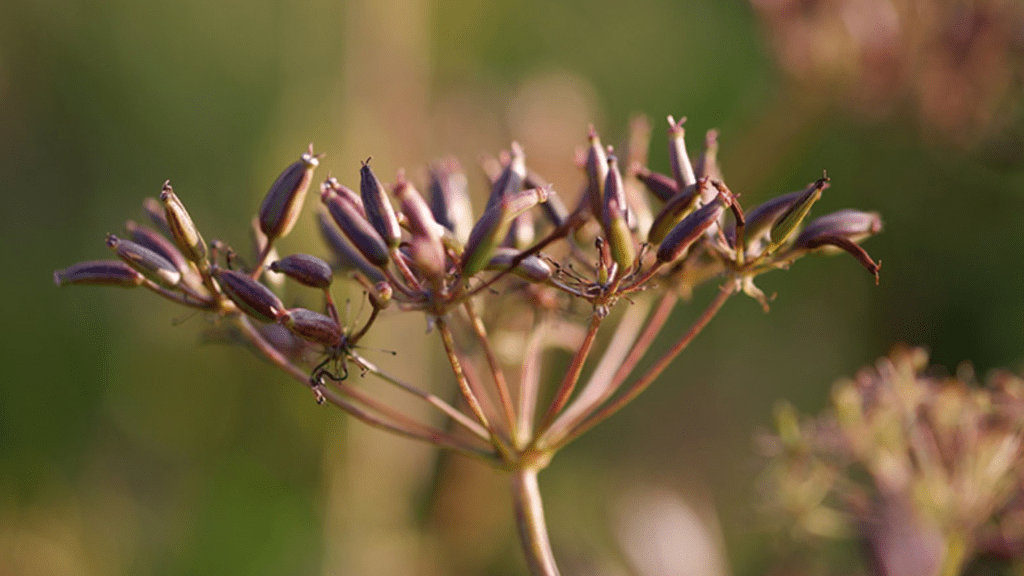
Growing Yarrow Plant Seeds: A Comprehensive Guide for Beginners
Yarrow plants are a beautiful addition to any garden, and growing them from seeds can be a rewarding experience for beginners. In this comprehensive guide, we will cover everything you need to know to successfully grow yarrow plant seeds, from choosing the right soil and location to caring for the plants as they grow. Whether you’re new to gardening or just new to yarrow plants, this guide will provide you with the knowledge and tips you need to have a successful growing experience.
The first step in growing yarrow plant seeds is to prepare the soil. Yarrow plants prefer well-draining soil with a slightly acidic to neutral pH. It’s important to choose a location with full sunlight for optimal growth. Once you have selected the perfect spot, you can begin to prepare the soil by loosening it and removing any debris or weeds. You can also add some organic matter, such as compost, to improve the soil structure and fertility.
Next, it’s time to plant the yarrow seeds. You can either start the seeds indoors in seed trays or sow them directly into the garden. If you choose to start the seeds indoors, make sure to provide them with adequate light and water. Once the seedlings have developed a few sets of true leaves, they can be transplanted into the garden.
As the yarrow plants grow, it’s important to provide them with regular water, especially during dry periods. Yarrow plants are relatively low-maintenance, but they may benefit from a light application of fertilizer in the spring to promote healthy growth.
In addition to regular watering and fertilizing, it’s a good idea to monitor the plants for any signs of pests or disease. If you notice any issues, you can take appropriate measures to address them and keep your yarrow plants healthy.
With the right care and attention, your yarrow plant seeds will grow into beautiful, resilient plants that will bring joy to your garden for years to come. Whether you’re a seasoned gardener or just starting out, growing yarrow plant seeds can be a fulfilling and rewarding experience.
Table of Contents
ToggleUnderstanding Yarrow Plants
Yarrow plants are relatively easy to care for once they are established in the garden. After the seedlings have developed a few sets of true leaves, they can be transplanted into the garden. It’s important to provide regular water to the plants, especially during dry periods, to ensure they stay healthy and vibrant. Yarrow plants may also benefit from a light application of fertilizer in the spring to promote healthy growth. Additionally, it’s important to monitor the plants for any signs of pests or disease and take appropriate measures to address them if necessary. With the right care and attention, yarrow plants can grow into beautiful, resilient plants that will bring joy to your garden for years to come. Growing yarrow plant seeds can be a fulfilling and rewarding experience for both seasoned gardeners and beginners alike.
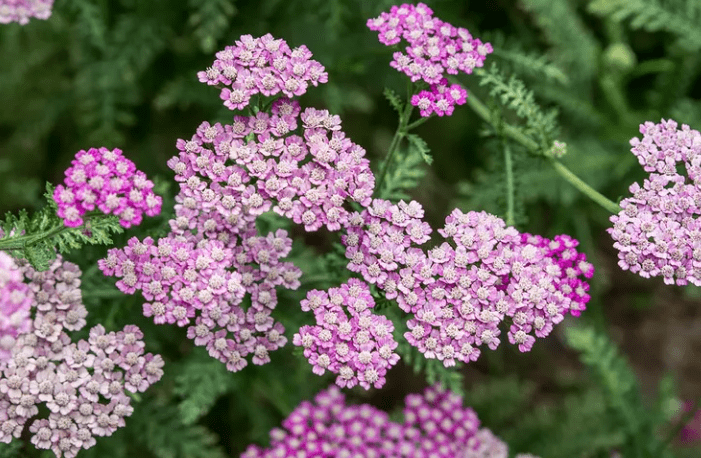
Describe the yarrow plant, its characteristics, and varieties.
Yarrow plants, also known as Achillea, are hardy perennial plants that are known for their feathery, aromatic foliage and flat-topped clusters of small, daisy-like flowers. They come in a variety of colors, including white, yellow, pink, and red, and are often used in garden borders, rock gardens, and as cut flowers. Yarrow plants are drought tolerant and can thrive in a wide range of soil types, making them a versatile and low-maintenance addition to any garden.
Yarrow plants are known for their ability to attract beneficial insects, such as butterflies and bees, making them a valuable addition to pollinator gardens. They are also deer resistant, making them a great choice for gardens in areas with high deer populations.
There are several varieties of yarrow plants, including common yarrow (Achillea millefolium), which is native to North America and Europe, and hybrid varieties such as ‘Moonshine’ and ‘Paprika‘ that have been bred for specific flower colors and characteristics. Some varieties, such as ‘Coronation Gold’, can grow up to three feet tall, while others, like ‘Little Moonshine’, stay compact and low-growing.
Overall, yarrow plants are a beautiful and versatile addition to any garden, and with the right care, they can thrive and provide beauty and benefits for years to come.
Discuss the historical and modern uses of yarrow in medicine, gardening, and landscaping.
Yarrow has a rich history of use in medicine, dating back to ancient times. It was used by early civilizations to treat wounds, fevers, and digestive issues. Yarrow was also used in traditional Chinese medicine and Native American medicine for its healing properties. In modern times, yarrow is still used in herbal medicine to treat a variety of ailments, including colds, flu, and digestive issues.
In gardening and landscaping, yarrow is a popular choice for its beautiful and long-lasting flowers. They come in a variety of colors, including white, yellow, pink, and red, and are often used in garden borders, rock gardens, and as cut flowers. Yarrow plants are drought tolerant and can thrive in a wide range of soil types, making them a versatile and low-maintenance addition to any garden.
Yarrow plants are also known for their ability to attract beneficial insects, such as butterflies and bees, making them a valuable addition to pollinator gardens. They are also deer resistant, making them a great choice for gardens in areas with high deer populations. There are several varieties of yarrow plants, each with their own unique characteristics and growing habits. Overall, yarrow plants are a beautiful and versatile addition to any garden, and with the right care, they can thrive and provide beauty and benefits for years to come.
Benefits of Growing Yarrow Plants from Seeds
Highlight the advantages of growing yarrow plants from seeds versus buying pre-grown plants.
There are several advantages to growing yarrow plants from seeds rather than buying pre-grown plants. First, growing yarrow from seeds allows you to have a wider selection of varieties to choose from. This means you can grow the specific color and type of yarrow that best suits your garden or landscaping needs. Additionally, growing from seeds is often more cost-effective than purchasing pre-grown plants, especially if you are looking to grow a large quantity of yarrow.
Another advantage of growing yarrow from seeds is that it allows you to have greater control over the growing environment and conditions. By starting from seeds, you can ensure that your yarrow plants receive the proper care and attention from the beginning, resulting in healthier and more robust plants.
Lastly, growing yarrow from seeds can be a rewarding and educational experience. Watching the seeds germinate and grow into mature plants can provide a sense of accomplishment and connection to the natural world. It also allows you to be more involved in the entire process of plant growth, from seed to flower. Overall, growing yarrow from seeds offers several advantages and can be a fulfilling and cost-effective option for adding these beautiful and beneficial plants to your garden.
Mention the ecological benefits, cost-effectiveness, and the satisfaction of growing plants from seeds.
Growing yarrow from seeds offers several advantages. First, it is more cost-effective than purchasing pre-grown plants, especially if you are looking to grow a large quantity of yarrow. This makes it a great option for those who want to save money while still enjoying a beautiful garden. Additionally, starting from seeds allows you to have greater control over the growing environment and conditions. This means you can ensure that your yarrow plants receive the proper care and attention from the beginning, resulting in healthier and more robust plants.
Another benefit of growing yarrow from seeds is the ecological impact. By starting from seeds, you can reduce the carbon footprint associated with transporting pre-grown plants. This is a great way to make your garden more sustainable and environmentally friendly.
Finally, growing yarrow from seeds can be a rewarding and educational experience. Watching the seeds germinate and grow into mature plants can provide a sense of accomplishment and connection to the natural world. It also allows you to be more involved in the entire process of plant growth, from seed to flower. Overall, growing yarrow from seeds offers several advantages and can be a fulfilling and cost-effective option for adding these beautiful and beneficial plants to your garden.
Selecting the Right Yarrow Plant Seeds
Provide tips on choosing high-quality yarrow plant seeds.
When choosing high-quality yarrow plant seeds, it’s important to consider a few key factors. First, look for a reputable and trusted seed supplier. This will ensure that you are getting seeds that are of good quality and have been properly stored to maintain their viability. Additionally, consider the variety of yarrow you want to grow and make sure the seeds you choose are specifically labeled for that variety. This will help ensure that you get the desired color and characteristics in your yarrow plants.
It’s also important to check the seed packaging for information on the seed’s germination rate and any specific growing requirements. Look for seeds that have a high germination rate, as this will increase the likelihood of successful seedling growth. Additionally, consider any specific soil, light, or water requirements for the yarrow variety you are interested in and make sure the seeds you choose are suited to those conditions.
Lastly, consider the age of the seeds. Fresher seeds generally have a higher germination rate and are more likely to produce healthy and vigorous plants. Look for seeds that have been harvested within the past year for the best results. By taking these factors into consideration, you can increase your chances of growing high-quality yarrow plants from seeds.
Discuss where to buy yarrow plant seeds (online stores, nurseries, etc.).
When it comes to buying yarrow plant seeds, there are several options to consider. Online stores such as Amazon, Etsy, and gardening websites are great places to find a variety of yarrow seeds. These online stores often offer a wide selection of different yarrow varieties and make it easy to compare prices and read customer reviews. Additionally, local nurseries and gardening centers may carry yarrow seeds, allowing you to support local businesses and get advice from knowledgeable staff. Another option is to look for specialty seed companies that focus specifically on selling a wide variety of plant seeds, including yarrow. These companies often provide detailed information about the seeds and their growing requirements, making it easier to choose the right seeds for your garden. Overall, it’s important to consider factors such as seed quality, germination rate, and growing requirements when purchasing yarrow seeds to ensure successful plant growth.
Preparing for Planting
Detail the steps to prepare the soil and planting area for yarrow seeds.
To prepare the soil and planting area for yarrow seeds, you will need to start by choosing a sunny location with well-drained soil. Yarrow plants thrive in full sun and prefer soil that is not too wet or too dry. Once you have chosen the planting area, you can begin preparing the soil by removing any weeds or debris and loosening the soil with a garden fork or tiller. It’s also a good idea to amend the soil with organic matter such as compost to improve its fertility and drainage.
Next, you can create rows or planting beds for the yarrow seeds. If you are planting yarrow seeds directly in the ground, you can simply scatter the seeds over the prepared soil and lightly press them into the soil surface. If you are starting the seeds indoors or in pots, you can plant them at a depth of about 1/4 inch in well-draining potting soil.
After planting the yarrow seeds, it’s important to keep the soil consistently moist but not waterlogged until the seeds germinate. Once the seeds have germinated and the seedlings have grown a bit, you can thin them out to ensure proper spacing for mature plants. Yarrow plants typically require little maintenance once established, so be sure to water them during dry periods and provide them with some fertilizer if necessary.
By following these steps to prepare the soil and planting area for yarrow seeds, you can create an ideal environment for successful yarrow plant growth.
Discuss the ideal climate and conditions for growing yarrow plants.
Yarrow plants thrive in a well-drained, sunny location with sandy or loamy soil. They prefer a climate with mild to moderate temperatures and can tolerate drought conditions once established. Yarrow plants are also tolerant of a wide range of soil pH levels, making them adaptable to various growing conditions. It’s important to prepare the soil by clearing away any weeds and debris and working in some organic matter such as compost or aged manure to improve soil fertility. This will create a good growing environment for the yarrow plants. Once the soil is prepared, you can sow the yarrow seeds in the ideal climate and conditions for successful germination and growth. Keep in mind that yarrow plants are also deer-resistant and attract pollinators, making them a great addition to a garden or landscape. With the right climate and conditions, yarrow plants can thrive and provide beautiful blooms throughout the growing season.
Explain the importance of soil quality, drainage, and sunlight
Soil quality, drainage, and sunlight are all essential factors in the successful growth of plants. Good soil quality ensures that the plants have access to the necessary nutrients and minerals they need to thrive. Proper drainage is important to prevent waterlogged soil, which can lead to root rot and other issues. Sunlight is also crucial for photosynthesis, the process by which plants produce their own food. Different plants have different sunlight requirements, so it’s important to consider the amount of sunlight a particular plant needs when choosing a location for it to grow. By paying attention to these factors, you can create an optimal growing environment for your plants and help them flourish.
Planting Yarrow Seeds
Step-by-step guide on how to plant yarrow seeds.
- Choose a location: Yarrow plants prefer full sun, so choose a location in your garden that receives at least six hours of sunlight per day.
- Prepare the soil: Yarrow plants thrive in well-draining soil, so make sure the soil is loose and well-draining. If your soil is heavy or compacted, consider adding some organic matter such as compost to improve its texture and drainage.
- Plant the seeds: Yarrow seeds are small and delicate, so scatter them lightly over the prepared soil. Gently press the seeds into the soil, but be careful not to bury them too deep, as they require light to germinate.
- Water the seeds: After planting, water the seeds gently to settle them into the soil. Keep the soil consistently moist but not waterlogged, as yarrow seeds require moisture to germinate.
- Monitor the growth: Yarrow seeds typically germinate within 14-21 days. Once the seedlings emerge, thin them out to allow for proper spacing, as yarrow plants can spread quickly. Provide regular water and monitor for any signs of pests or diseases.
- Maintenance: Once the yarrow plants are established, they require minimal maintenance. Deadhead the flowers to encourage continuous blooming, and divide the plants every few years to prevent overcrowding.
By following these steps and providing the right growing conditions, you can successfully plant yarrow seeds and enjoy beautiful, vibrant blooms in your garden.
Tips on spacing, depth, and watering during the initial planting phase.
When planting yarrow seeds, it’s important to keep the soil consistently moist but not waterlogged, as yarrow seeds require moisture to germinate. You should also monitor the growth of the seeds, as yarrow seeds typically germinate within 14-21 days. Once the seedlings emerge, it’s important to thin them out to allow for proper spacing, as yarrow plants can spread quickly. Additionally, provide regular water and monitor for any signs of pests or diseases. As the yarrow plants become established, they require minimal maintenance. You can deadhead the flowers to encourage continuous blooming, and divide the plants every few years to prevent overcrowding. By following these steps and providing the right growing conditions, you can successfully plant yarrow seeds and enjoy beautiful, vibrant blooms in your garden.
Caring for Yarrow Plants
Detailed care guide including watering, fertilizing, and pest control.
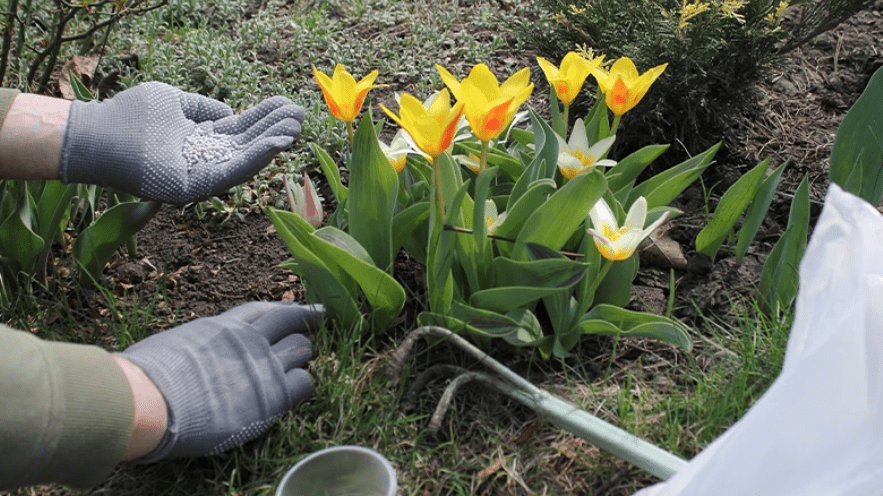
When planting yarrow seeds, it’s crucial to provide the right care to ensure successful growth. Start by keeping the soil consistently moist but not waterlogged, as yarrow seeds require moisture to germinate. It’s also important to monitor the growth of the seeds, as yarrow seeds typically germinate within 14-21 days. Once the seedlings emerge, thin them out to allow for proper spacing, as yarrow plants can spread quickly.
In terms of ongoing care, provide regular water and monitor for any signs of pests or diseases. As the yarrow plants become established, they require minimal maintenance. You can deadhead the flowers to encourage continuous blooming, and divide the plants every few years to prevent overcrowding.
Fertilizing is also important for the health and growth of yarrow plants. Use a balanced, all-purpose fertilizer in early spring to promote healthy growth and vibrant blooms.
By following these steps and providing the right growing conditions, you can successfully plant yarrow seeds and enjoy beautiful, vibrant blooms in your garden.
Tips on pruning and maintaining the health of yarrow plants.
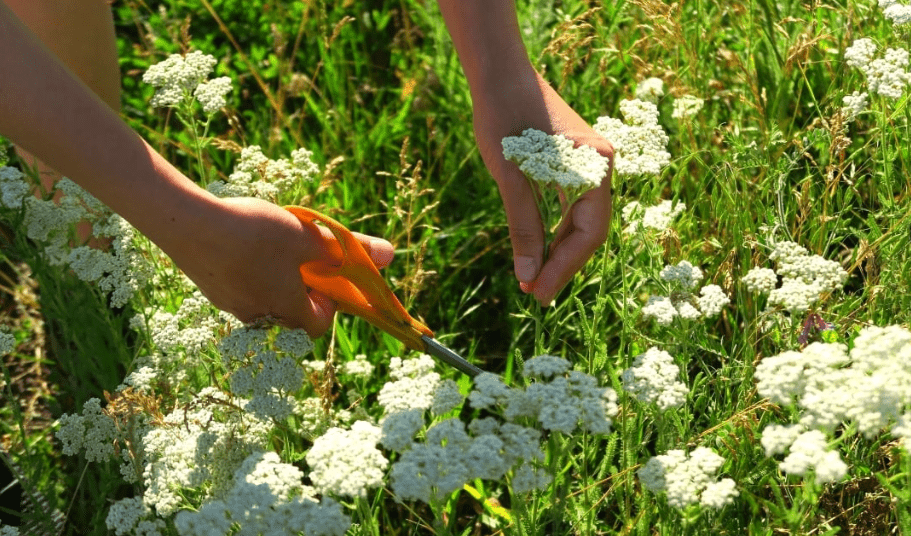
Yarrow plants are a beautiful addition to any garden, but they do require some care to maintain their health and vibrancy. To start, once the seedlings emerge, it’s important to thin them out to allow for proper spacing, as yarrow plants can spread quickly. In terms of ongoing care, it’s important to provide regular water and monitor for any signs of pests or diseases. As the yarrow plants become established, they require minimal maintenance. You can deadhead the flowers to encourage continuous blooming, and divide the plants every few years to prevent overcrowding.
Fertilizing is also important for the health and growth of yarrow plants. Use a balanced, all-purpose fertilizer in early spring to promote healthy growth and vibrant blooms. By following these steps and providing the right growing conditions, you can successfully plant yarrow seeds and enjoy beautiful, vibrant blooms in your garden. With the right care and attention, yarrow plants can thrive and enhance the beauty of any garden.
Common issues and how to address them, such as diseases and pests.
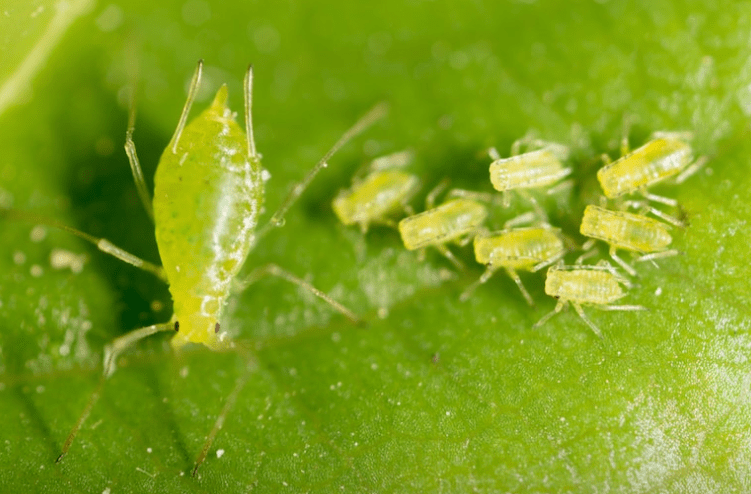
Yarrow plants are generally low maintenance, but there are still some common issues to be aware of and how to address them. One common issue is the presence of pests and diseases. It’s important to monitor the plants regularly for any signs of pests such as aphids or mites, and to take measures to control them if necessary. You can use insecticidal soap or neem oil to effectively manage these pests. In terms of diseases, yarrow plants are susceptible to powdery mildew and root rot. To prevent powdery mildew, make sure to plant yarrow in a location with good air circulation and avoid overhead watering. To prevent root rot, ensure that the soil is well-drained and not waterlogged. Additionally, it’s important to provide regular water and proper fertilization to keep the plants healthy and resilient against diseases and pests. By staying vigilant and providing the right care, you can address these common issues and ensure the continued health and beauty of your yarrow plants.
Harvesting Yarrow
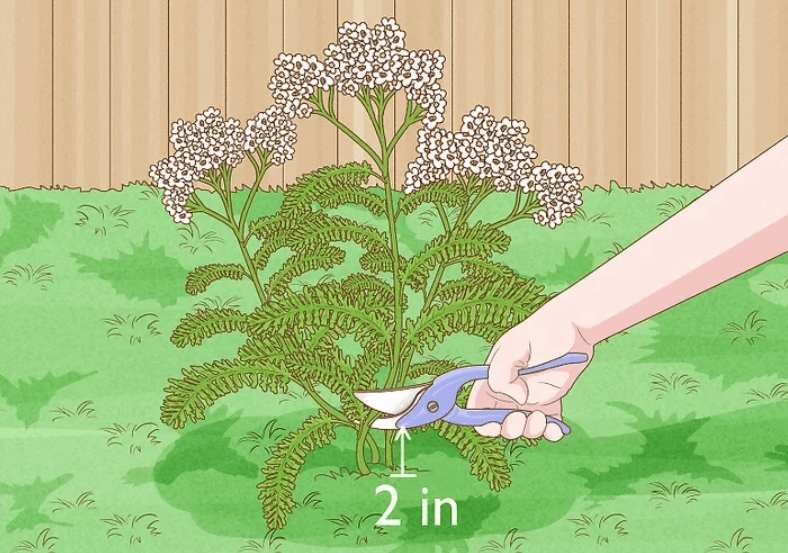
is an important process that requires careful attention to ensure the continued health of the plants. Yarrow can be harvested once the flowers have fully bloomed. It’s best to harvest in the morning when the oils in the plant are at their peak. When harvesting, it’s important to leave at least a third of the plant intact to allow for regrowth.
To harvest yarrow, use a pair of sharp, clean scissors or pruning shears to cut the flower heads from the stem. Be sure to handle the plant with care to avoid damaging the delicate flowers. Once harvested, the flower heads can be used fresh or dried for later use.
When drying yarrow, it’s best to hang the flower heads upside down in a warm, dry area with good air circulation. Once completely dried, store the flower heads in an airtight container away from light and moisture.
Harvesting yarrow not only allows you to enjoy its medicinal and culinary benefits, but it also promotes the growth and vitality of the plant. By following proper harvesting techniques, you can continue to reap the rewards of yarrow for years to come.
Extracting and Saving Yarrow Plant Seeds
To harvest yarrow seeds, wait until the flower heads have turned brown and dried out on the plant. Use clean, sharp scissors or pruning shears to snip off the seed heads, making sure to handle the plant gently to avoid damaging the seeds. Place the seed heads in a paper bag and allow them to dry out completely in a warm, dry area with good air circulation. Once dried, gently crush the seed heads to release the seeds. Remove any chaff or debris from the seeds and store them in a cool, dry place in an airtight container. Properly storing yarrow seeds will ensure their viability for future planting and continued growth of the yarrow plant.
Common Problems and Solutions
One common problem with harvesting yarrow is that the flower heads may not be fully dried out before snipping them off the plant. To avoid this, be patient and wait until the flower heads have turned completely brown and dried out on the plant. Another problem is not properly storing the seeds, which can lead to mold or loss of viability. To solve this, make sure to store the seeds in a cool, dry place in an airtight container to protect them from moisture and humidity. By following these proper harvesting and storage techniques, you can continue to reap the rewards of yarrow for years to come.
In conclusion, growing yarrow plant seeds can be a rewarding experience for beginners. By following the comprehensive guide provided, you can ensure that your yarrow plants thrive and flourish. Remember to choose the right soil, location, and provide proper care and maintenance for the best results. With a little patience and dedication, you can successfully grow beautiful yarrow plants from seeds. Happy gardening!
Frequently asked questions And Answer
Yarrow seeds should be planted in well-drained soil, either in the spring or fall. Scatter the seeds over the soil and lightly cover them with a thin layer of soil. Water the seeds gently to keep the soil moist.
Yarrow seeds typically take 14-21 days to germinate. Keep the soil consistently moist during this time to help the seeds sprout.
Yarrow plants prefer full sun, so it’s best to plant them in a location that receives at least 6 hours of sunlight per day.
Yarrow plants are drought-tolerant once established, so they only need to be watered during dry periods. Overwatering can lead to root rot, so it’s important to let the soil dry out between waterings.
Yarrow plants can grow anywhere from 1 to 3 feet tall, depending on the variety. They also have a spread of 1 to 2 feet.
Yarrow flowers are best harvested in the early morning once they have fully bloomed. It’s best to harvest them before the heat of the day causes the flowers to wilt.
Yes, yarrow plants can be grown in pots as long as the pot has good drainage. Choose a larger pot to accommodate the plant’s size and ensure it receives enough sunlight.
Yarrow plants are relatively low-maintenance and can thrive in various soil conditions. Once established, they require minimal care and can even attract beneficial insects to the garden.
